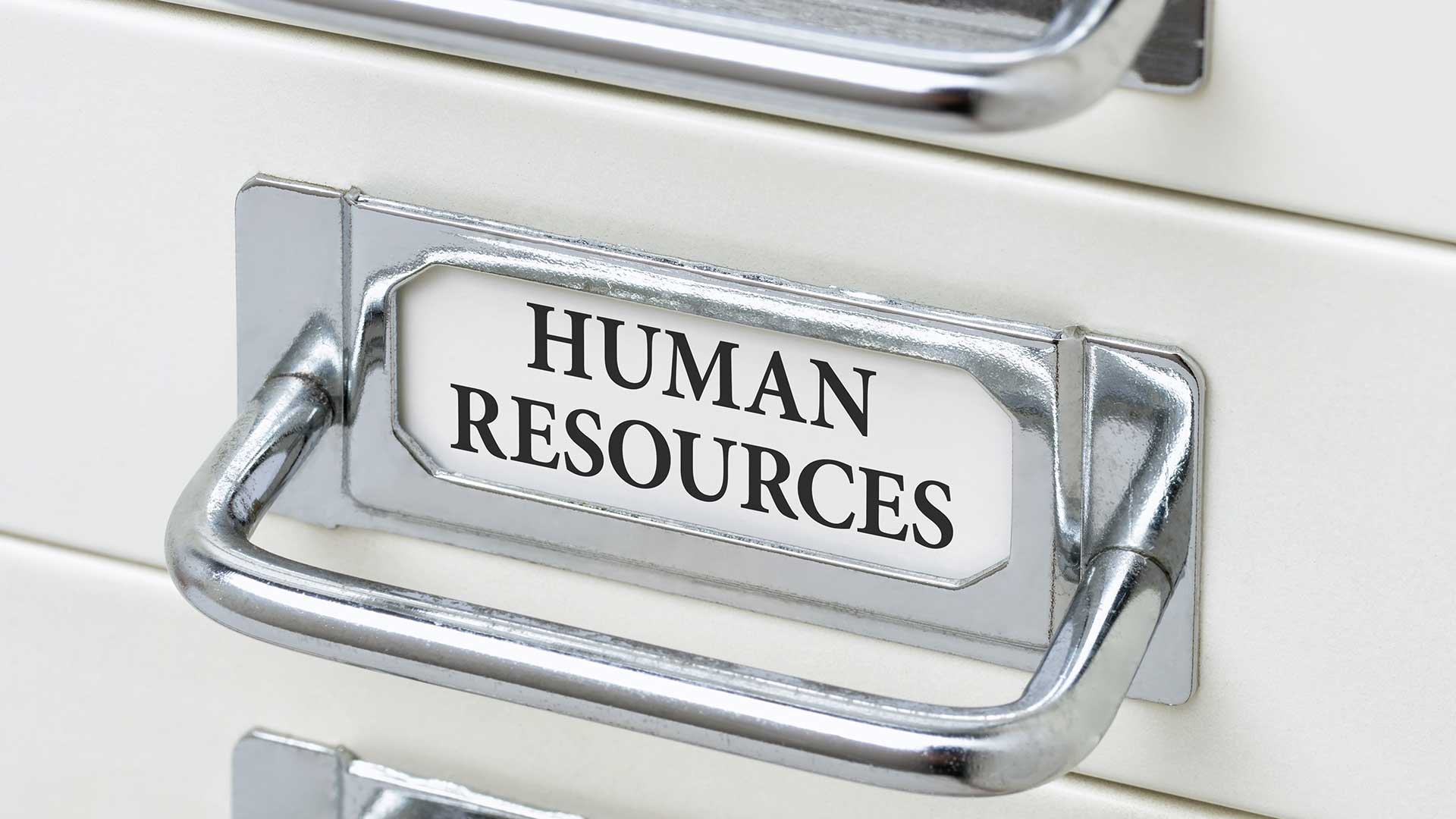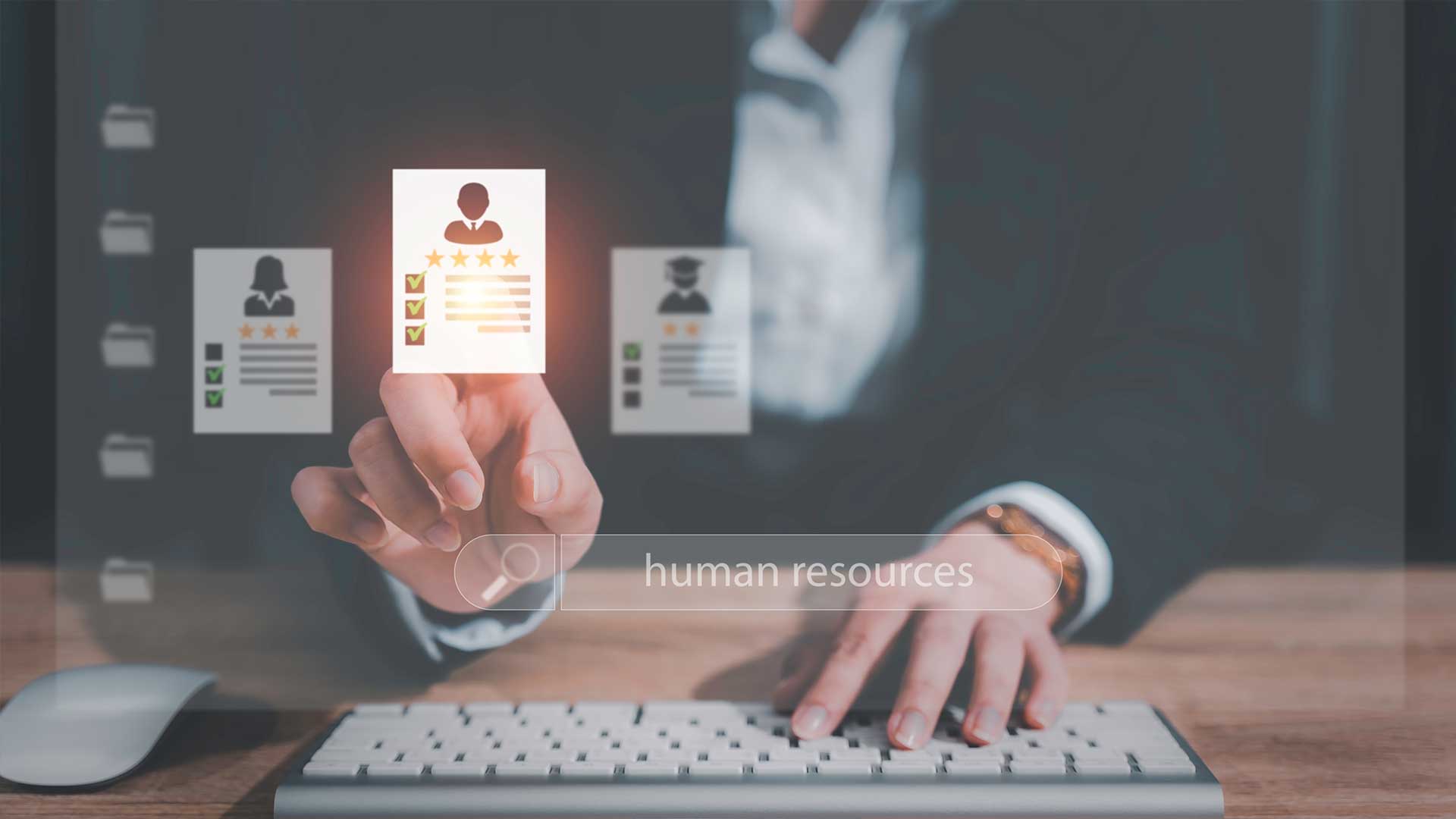Digital Transformation in HR
The Always Up-to-Date Guide
Learn everything you need to know about digital employee records and going paperless in your office.
- Chapter I: Introduction
- Chapter II: Document Scanning in HR
- Chapter III: The Document Scanning Process
- Chapter IV: Integration of Document Scanning with Your HRIS
- Chapter V: Role of Document Management Systems in HR
- Chapter VI: Improving HR Records Retention with Document Scanning
- Chapter VII: Transitioning to a Digital-First Approach in HR
- Chapter VIII: Choosing the Right Document Scanning Service Provider
- Chapter IX: FAQs
- Chapter X: Conclusion
Introduction
In the grand scheme of things, we’re all on a roller-coaster ride known as 'digital transformation.' But what is digital transformation in HR, and why is it creating such a buzz? Put simply, it's the application of digital technologies to improve HR functions and practices. It’s about digitizing every 'i' dotted and 't' crossed, turning paper trails into digital highways. Remember, it's not just about swapping Post-it notes with fancy tech tools; it's about reimagining the HR function for the digital age.
Imagine going from rifling through filing cabinets to retrieving data with just a few keystrokes. Or swapping out long-winded email threads for real-time collaboration tools. The ultimate aim? To enable HR departments to serve as strategic business partners, armed with data-driven insights and efficient workflows. Now, that’s a pretty neat picture, isn’t it?
The Emergence of Digital Transformation in HR
So, when did the digital revolution knock on HR's door? It's not like one fine morning, we woke up to a digitally transformed HR landscape. Changes in technology and the dynamics of the workforce have been the driving forces behind this transformation. As businesses started seeing the benefits of automating repetitive tasks and digitizing paperwork, the case for digital transformation in HR started to build.
The advent of cloud technology played a significant role in propelling this transformation. The ability to access and manage HR data from anywhere was a game-changer. It wasn’t just about replacing paper records with digital files. It was about breaking free from physical limitations and ushering in an era of leveraging technology with enhanced accessibility, efficiency, and data security.
Why HR Departments Need Digital Transformation
Alright, let's get down to brass tacks. Why should HR departments embrace digital transformation? Firstly, digital transformation equips HR professionals with the tools to streamline processes, from talent acquisition to payroll management. It frees up their time from mundane tasks, allowing them to focus on strategic initiatives like employee engagement, employee satisfaction, organizational development, and fostering a positive workplace culture.
Secondly, digital transformation in HR also equips organizations with a wealth of data to make informed decisions. Employee performance metrics, recruitment data, and workforce trends—the list goes on. This data, when harnessed effectively, can provide valuable insights for decision-making. After all, data is the new gold in today's world, and HR departments need to be gold miners!
Potential Obstacles in HR Digital Transformation
The road to HR digital transformation isn't exactly a walk in the park. The first speed bump often comes in the form of resistance to change. It's human nature, after all, to feel comfortable with the familiar and anxious about the new. However, the right change management strategies can mitigate this resistance.
Another common obstacle is the lack of digital literacy. Not everyone is a tech whiz, and the prospect of navigating new digital tools can be daunting for some HR professionals. But, as the saying goes, "Every expert was once a beginner." With ongoing training and support, HR teams can build their digital proficiency over time.
Lastly, concerns about data security can also hinder the adoption of HR digital transformation. With the shift to digital comes the need to protect sensitive data from cyber threats. It's a legitimate concern that can be addressed with robust data security measures and regular audits.
Understanding Document Scanning in HR
Next up on our digital transformation journey in HR is document scanning. This is the key process where stacks of paper records are converted into digital formats, like turning pages of history into future bytes. You can picture it as a great, big digital 'scan-athon,' freeing data from the confines of physical folders and making it accessible with a simple click.
But hold your horses—document scanning is not just about feeding papers into a scanner. It involves careful planning, including sorting and organizing documents, preparing them for scanning, indexing the scanned files for easy retrieval, and then storing them securely. Document scanning can give your HR department a much-needed digital facelift when done right.
The Basics of Document Scanning
The basic idea behind document scanning in HR is as straightforward as a pancake. Paper documents are scanned using a high-speed scanner and then converted into digital images, usually in PDF or TIFF format. The next step is to use optical character recognition (OCR) technology and machine learning with AI, which recognizes the text within these images, making the documents searchable.
Once the documents are scanned and processed, they are indexed. Think of it as a digital library card catalog, where each document is tagged with specific information (like employee name, document type, and date) for easy retrieval. Voila! The once-inaccessible paper document is now a searchable digital file at your fingertips.
Importance of Document Scanning in HR
So why bother with document scanning in HR? Because it's the magic portal from paper mayhem to digital delight. Document scanning in HR can save space, time, and even money. It's about swapping the headache of lost or misplaced documents for the ease of instant access. No more rummaging through filing cabinets or waiting for documents to arrive from another office.
Document scanning in HR improves efficiency and data security. Digital documents can be encrypted, access-controlled, and backed up to protect against data loss. Tracking who accessed a file improves long-term accountability.
Different Types of HR Documents That Require Scanning
You might be wondering, "Which HR documents should I scan?" Well, think of any document that is integral to the HR function. Employee records, contracts, onboarding documents, benefits forms, timesheets, performance appraisals, and the list goes on.
Let's not forget about compliance. Certain documents, like I-9 forms and EEOC reports, must be retained for a specific period as per federal regulations. Scanning these documents ensures they are easily accessible for audits and reviews.
If a document is important to HR processes, it's a candidate for scanning. With the right approach and tools, document scanning in HR can be a smooth sail rather than a turbulent tide, propelling HR departments further into the realm of digital transformation.
The Document Scanning Process
Now that we've understood the significance of document scanning in HR, let's pull back the curtain on the scanning process itself. Picture it as a production line, where piles of paper documents enter at one end and, voila, they've turned into organized, searchable digital files. It might seem like magic, but it's the result of a structured, meticulous process.
Remember, document scanning isn't just a one-off project; it's a crucial step in the digital transformation in HR. It's not about running a marathon without a finish line; it's about setting a steady pace toward a more efficient, data-driven HR department.
Step-by-Step Guide to the Scanning Process
The document scanning process in HR can be broken down into a few key steps. First, we start with preparation, which includes collecting and organizing the documents, removing any staples or clips, and sorting them according to the indexing criteria.
Next, we proceed to the actual scanning. The documents are fed through a scanner that captures each page's image. Once scanned, these digital images are processed using OCR (optical character recognition) technology to recognize the text, transforming the images into searchable documents.
After scanning and processing comes the indexing stage. Each document is tagged with key identifiers to facilitate easy search and retrieval. Think of it as creating a digital map that guides you straight to the information you need.
Finally, the digital files are securely stored in a document management system. And there you have it: a streamlined scanning process that makes document management a breeze in HR!
Choosing Between In-House and Outsourced Scanning
When it comes to document scanning for digital transformation in HR, there's a choice to be made: scan in-house or outsource. Both approaches have pros and cons.
On the one hand, in-house scanning gives you more control over the process and can be cost-effective if you have a small volume of documents. But remember, it can be time-consuming and requires an investment in scanning equipment and software.
On the other hand, outsourcing to a professional scanning service can save you time and ensure high-quality scans, especially for large volumes of documents. However, it is crucial to choose a trustworthy provider who complies with data privacy and security regulations.
Key Considerations in the Scanning Process
While embarking on the document scanning journey, there are some key considerations to keep in mind. Firstly, the quality of scans is crucial for readability and future reference. Secondly, ensuring accurate indexing is like laying a golden egg—it's what makes the entire process worthwhile.
Don't forget about data security. Protecting sensitive HR documents during and after the scanning process is vital. Last but not least, plan for how you'll dispose of the original paper documents after scanning. Shredding or secure disposal can ensure that sensitive information doesn't fall into the wrong hands.
Integration of Document Scanning with Human Resources Information Systems (HRIS)
Let's now shift our focus to the marriage of two major elements of digital transformation in HR: Document Scanning and Human Resources Information Systems (HRIS). Integrating these two is like connecting two powerhouses that work hand in hand to boost HR efficiency. It's about creating a symbiotic relationship where document scanning feeds into the HRIS, and the HRIS, in turn, makes the most of this digitized data. It's like adding fuel to the HRIS engine, gearing it up to deliver top-notch performance.
Remember, it's not about having two separate systems that function in silos. It's about creating an interconnected ecosystem where scanned documents and HRIS interact seamlessly. This synergy is the cornerstone of a truly digital HR department.
How Document Scanning Complements HRIS
But how does document scanning complement HRIS? Imagine the HRIS as a supercar. While it's powerful on its own, it needs fuel to run—that's where document scanning comes in. By converting paper documents into digital format, document scanning populates the HRIS with the necessary data to carry out its functions.
Every HR process involves documentation, from recruitment and onboarding to performance management and payroll. When these documents are digitized, they become accessible within the HRIS. It's like having a central command center where all HR data is at your fingertips.
Seamless Transition to Digital Records within HRIS
The goal is to seamlessly transition scanned documents into the HRIS. Think of it as a smooth relay race, where the baton is passed from the scanning team to the HRIS without a hitch. This requires careful planning and coordination.
Documents need to be scanned and indexed to align with the HRIS structure. Metadata tags used in indexing should correspond to fields within the HRIS. This ensures that the scanned documents are not just dumped into the HRIS but are neatly organized and easily retrievable.
Managing and Updating Digital Records in HRIS
The work isn't over once the documents are scanned and integrated into the HRIS. These digital records need to be managed and updated regularly. Whether it's adding a new document for a recently hired employee or updating an existing record following a performance review, maintaining the digital database is an ongoing task.
Moreover, data security measures should be in place to protect these digital records. Regular audits and access controls can ensure that sensitive HR data is safeguarded.
Integrating document scanning with HRIS is like piecing together a jigsaw puzzle in the digital transformation of HR. When these pieces fit together perfectly, it creates a complete picture of a modern, efficient, and data-driven HR department.
Role of Document Management Systems in HR
As we delve deeper into digital transformation in HR, it's time to spotlight Document Management Systems (DMS). Picture a DMS as a digital librarian, organizing, indexing, and storing all HR records in one secure location. It's the stronghold where your digitized documents reside post-scanning, ensuring they are safely stored and easily accessible.
A DMS is not just a fancy storage box. It's a powerhouse of features designed to enhance HR efficiency. From advanced search capabilities and version control to audit trails and access controls, a DMS brings together a suite of functionalities under one digital roof.
The Function of Document Management Systems in HR
So, what exactly does a DMS do in the context of HR? It's a multi-tasker that handles several key functions. For starters, it organizes all HR documents in a structured manner, making retrieval a piece of cake. Need to pull up an employee's contract for review? No more wading through stacks of paper—just a few clicks in the DMS, and you've got it! How’s that for an improved employee experience?
Moreover, a DMS also safeguards sensitive HR records. Features like encryption and access controls ensure that your HR data remains confidential and secure.
But that's not all. A DMS can also automate HR workflows, reducing manual work. For instance, it can automatically route a leave application to the right personnel for approval. Talk about a smart system!
Selecting the Right Document Management System
Choosing the right DMS for your HR department is like finding the perfect pair of shoes—it should fit your needs and comfort level perfectly. Several factors come into play here.
Does the DMS offer robust security features? Can it integrate seamlessly with your existing HRIS? Does it offer a user-friendly interface? Is it scalable to accommodate your growing HR needs? These are questions worth considering while evaluating a DMS.
Remember, the goal is not to choose the most popular DMS or the one with the most bells and whistles. It's about finding a system that aligns with your HR department's requirements and objectives.
Benefits of Using a Document Management System
Using a DMS can reap a host of benefits for your HR department. Firstly, it boosts efficiency by eliminating the need to handle paper records manually. No more lost documents or misfiled records—everything is digitally organized and just a search away.
Secondly, a DMS enhances data security. Digital documents are not prone to physical damage or loss and can be encrypted and access-controlled for added security.
Additionally, a DMS can also support compliance. The ability to retain and retrieve documents as per regulatory requirements can be your ally in maintaining HR compliance.
In a nutshell, a DMS is a vital cog in the HR digital transformation wheel. It's about building a secure, organized, and efficient digital fortress for your HR documents. A well-chosen DMS can pave the way for a future-ready HR department, propelling your digital transformation journey to new heights.
Improving HR Records Retention with Document Scanning
In our digital transformation of the HR journey, it's time to address another important aspect: HR records retention. It's like the unsung hero of the HR world, often overlooked but oh-so-important. Think of it as maintaining a historical record, a legacy of the HR department’s actions and decisions.
And guess what? Document scanning plays a pivotal role here. It transforms the often daunting task of records retention into a smooth and manageable process. It's about replacing dust-laden file rooms with secure, searchable digital archives.
The Importance of HR Records Retention
Let's get to the heart of the matter. Why is HR records retention so important? For starters, it's not just an HR best practice; it's a legal requirement. Different laws dictate how long certain HR documents must be retained. Each has its own retention timeline, from employment applications and payroll records to I-9 forms and safety incident reports.
But it's not just about staying on the right side of the law. Retaining HR records can also provide valuable insights into HR trends and patterns. It can support data-driven decisions and even help defend against potential legal claims.
How Document Scanning Supports Compliance with Retention Laws
This is where document scanning steps in. Converting physical documents into digital format makes records retention a walk in the park. No more worries about physical storage space or lost documents. You can retain digital records as long as required without the physical hassle.
Moreover, a digital document management system can even automate retention schedules, ensuring compliance with retention laws. Set the retention period for each document type, and the system takes care of the rest. It's like having a personal assistant who's got your back on compliance!
Digital Archiving and Easy Retrieval of HR Records
Once the documents are digitized, they are stored in a digital archive. Picture it as a virtual file room, where each document is neatly organized and easily retrievable. Need to pull up an old performance appraisal report? A quick search in the digital archive will bring it up right there on your screen.
Moreover, digital archives offer advanced search capabilities, making it easy to locate specific records. You have the right information at your fingertips when you need it.
Safeguarding HR Records against Physical Damage or Loss
Last but not least, digitizing HR records offers an added layer of protection. Unlike physical documents, digital records are not prone to damage from fire, water, or just the passage of time. They can be backed up to ensure data is never lost.
Moreover, digital records can be encrypted and access-controlled to prevent unauthorized access. It's like having a state-of-the-art security system safeguarding your HR records.
Transitioning to a Digital-First Approach in HR
As we further navigate the path of HR digital transformation, it's time to tackle another critical aspect: transitioning to a digital-first approach. Imagine it as moving from a world of paper-laden desks and filing cabinets to a streamlined, digital workspace. It's about embracing technology as the driver of HR processes, right from recruiting to retiring.
But this transition isn't just a switch that you flip. It's a gradual process requiring planning, training, and, most importantly, a shift in mindset. It's about acknowledging that going digital isn't just an option anymore, it's a necessity for a future-ready HR department.
Implementing eForms in HR
Implementing electronic forms, or eForms, in HR processes is a significant step in transitioning to a digital-first approach. Gone are the days of filling out paper forms and passing them down the line. With eForms, data can be collected, processed, and stored digitally. Whether it's a job application form or a leave request, eForms make the process faster, more efficient, and error-free.
Moreover, eForms offer a wealth of benefits. They save time and resources spent on paper handling. They also enable real-time data collection and provide instant access to the collected data. EForms can integrate seamlessly with other HR systems, streamlining data flow across processes.
Training HR Staff for Digital-First Operations
However, transitioning to a digital-first approach isn't just about implementing new systems. It's equally important to train HR staff to use these systems effectively. After all, the most sophisticated system is of no use if the users don't know how to operate it, right?
Training should be comprehensive and ongoing. It should cover the basics of operating the system, understanding its features, and troubleshooting common issues. Remember, the goal is to make HR staff comfortable and confident with the new digital tools, improving the employee experience.
Sustaining a Digital-First HR Department
Transitioning to a digital-first approach is not a one-time project. It's a continual journey of learning, adapting, and improving. It involves staying updated with the latest digital trends and continuously evaluating the effectiveness of the implemented systems.
Moreover, a digital-first approach calls for a change in the HR department's culture. It requires encouraging a mindset that sees digital technology not as a threat but as an ally. Foster an environment where digital innovation is welcomed and appreciated.
Choosing the Right Document Scanning Service Provider
You have your digital transformation strategy in place. You're ready to take the plunge and dive headfirst into the paperless world. But wait, who's going to do all the scanning for you? It's a question that can make even the most tech-savvy HR manager break into a sweat. The good news is that plenty of document scanning service providers are out there, ready to take the task off your hands. But how do you choose the right one for your HR department? Let's take a look.
Identifying Your Scanning Needs and Requirements
First and foremost, it's important to understand your scanning needs and requirements clearly. It's like planning a road trip—you can't map out your route unless you know your destination. So, ask yourself, “How many documents do you need to scan? What's the nature of these documents? Do they need to be indexed for easy search and retrieval? What's your timeline for the scanning project?” By answering these questions, you can create a blueprint for your scanning project to guide you in selecting the right service provider.
Evaluating and Selecting the Right Scanning Company
Armed with your scanning project blueprint, you can start evaluating potential service providers. Look for providers that have experience in HR document scanning. Check their client testimonials and case studies. Do they have a proven track record of delivering projects on time and within budget?
Also, consider the range of services they offer. Do they provide end-to-end scanning services, right from document collection to secure disposal of the original documents? What about their technology? Do they use advanced scanning devices and software to ensure high-quality digital images?
Lastly, don't forget about the cost. Remember, the cheapest provider may not necessarily be the best. Look for a provider that offers the best value for your investment—high-quality services at a reasonable price.
Ensuring Success with Your Document Scanning Provider
Choosing the right scanning provider is only half the battle. To ensure the success of your scanning project, it's important to establish clear communication and coordination with the provider. Keep them informed about your expectations and requirements. Provide them with all the necessary information and resources.
Moreover, monitor the project's progress regularly. Ask for updates and reports. Make sure that the provider is meeting the project timeline and quality standards.
Remember that the goal of your digital transformation is not just to go paperless in HR. It's to create an efficient, data-driven HR department that can make better decisions, deliver better services, and contribute to the overall success of your organization. By choosing the right document scanning service provider, you're taking a significant step towards achieving this goal.
FAQs about Digital Transformation in HR
Document scanning is a crucial step in the digital transformation of HR. It involves converting paper documents into digital format, making them accessible and searchable electronically. This not only streamlines document management but also aids in data analysis, supports compliance with retention laws, and enhances overall HR efficiency.
Document scanning feeds into HRIS by providing the necessary data for it to function. The scanned documents are processed, indexed, and then imported into the HRIS. This allows for seamless data flow across HR processes, making data readily available for HRIS functions such as recruitment, onboarding, performance management, and payroll.
A Document Management System (DMS) serves as a central repository for all HR records, organizing and storing them in one secure, digital location. It offers features such as advanced search capabilities, version control, audit trails, and access controls, facilitating efficient document management. A DMS also supports compliance by helping HR departments adhere to document retention laws.
A digital-first approach in HR refers to prioritizing digital technology in HR operations. It involves replacing traditional, manual, paper-based processes with automated, digital solutions. This approach leads to increased efficiency, accuracy, and productivity and is an essential component of the digital transformation in HR.
Document scanning digitizes physical documents, making it easier to store and retrieve them as per retention laws. The digital documents are indexed and stored in a Document Management System (DMS), where they can be retained for the required period and retrieved easily when needed. This supports compliance with records retention laws and also protects documents from physical damage or loss.
The future of HR is moving towards a paperless world, where manual, paper-based processes are replaced with digital solutions. Document scanning plays a pivotal role in this shift, transforming paper documents into digital data. As HR departments continue to embrace digital transformation, they can leverage the benefits of document scanning to become more efficient, data-driven, and future-ready.
Conclusion
As we come to the end of this enlightening journey through digital transformation in HR, it's time to hit the pause button and take a look back. We've traversed the wide landscapes of document scanning, explored the intricacies of integrating it with HRIS, dived deep into the role of document management systems, and navigated the path to a digital-first HR approach.
Recap of the Importance of Document Scanning in HR
From the outset, we recognized the crucial role of document scanning in shaping the digital transformation in HR. The magic wand transforms piles of paper into organized, searchable digital data. It not only enhances HR efficiency but also ensures compliance and data security
We also realized that this transformation isn't just about technology. It's equally about people—the HR staff who need to be trained and empowered to use these digital tools. It's about fostering a digital-first culture that embraces innovation and adaptability.
The Future of HR: Moving Towards a Paperless World
As we set our sights on the future, one thing is clear—the future of HR is paperless. It's a world where manual, paper-based processes are replaced with automated, digital solutions. A world where data is not locked away in filing cabinets but is readily available at the click of a button.
Document scanning is a significant step toward this future. It's the bridge that connects the traditional, paper-dependent HR world to the modern, digital HR world. It's not just about going paperless; it's about unlocking the true potential of HR data.
In conclusion, the digital transformation in HR is more than a trend—it's a paradigm shift, a new way of working. Document scanning is at the heart of this transformation. It's the key to a more efficient, data-driven HR department.
As we continue to evolve and adapt in this digital age, one thing remains certain—the future of HR is not written on paper; it's digital. And with document scanning, we're well on our way to that future.
So, are you ready to take the plunge and dive into the digital world of HR? The future awaits!
Contributors:

Kevin D'Arcy
Topic Specialist
Looking to Scan Your HR Records?
Get connected to the best document scanning company in your area. Contact us today!
From Our Blog
Stay up-to-date with what's new in our industry and learn more about the upcoming products and events.

Going Paperless: How Document Scanning Can Boost Employee Morale

Revamping HR with Digital Transition: The Power of Document Scanning

2025 HR Document Retention Guide: Build a Smarter Filing System

Going Paperless: Document Scanning Services for HR Departments

Workflow Software: The Secret Weapon for HR Departments

HR's Digital Revolution: Embracing ECM Software to Boost Efficiency

How to Become an HR Rockstar by Going Paperless

The Benefits of Scanning Employee Records for Compliance and Legal Purposes
